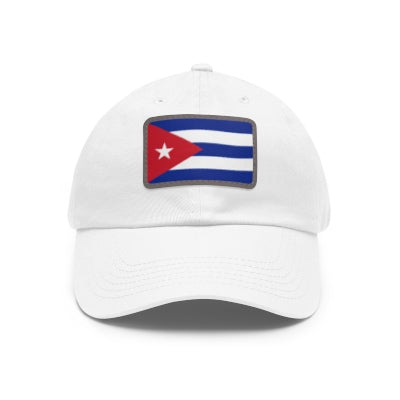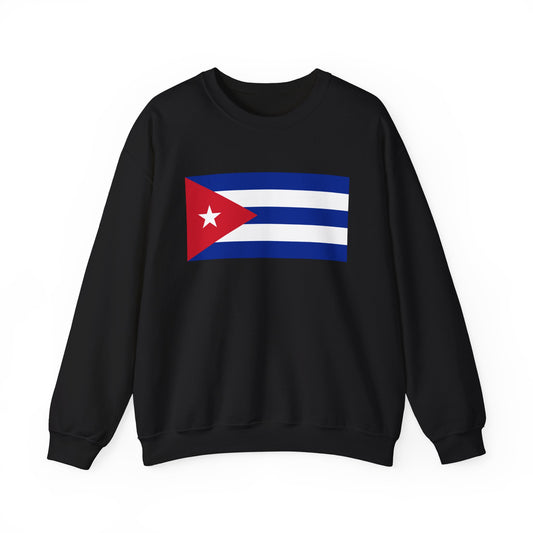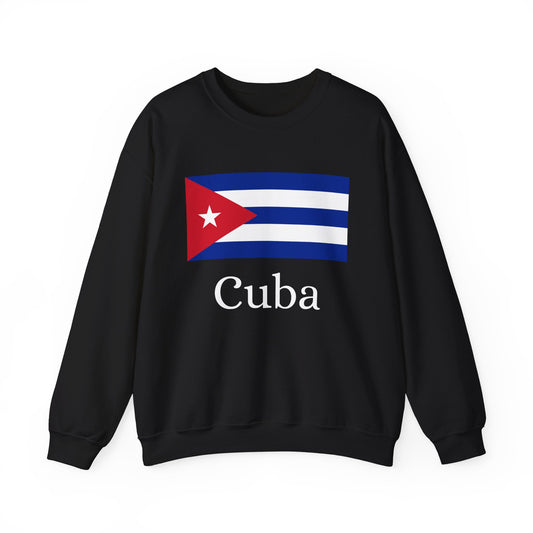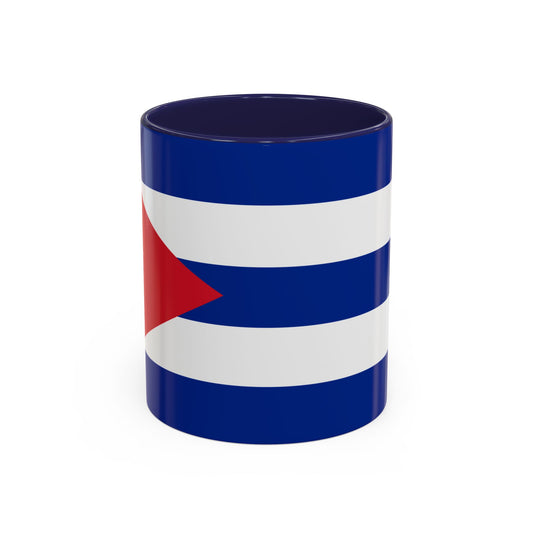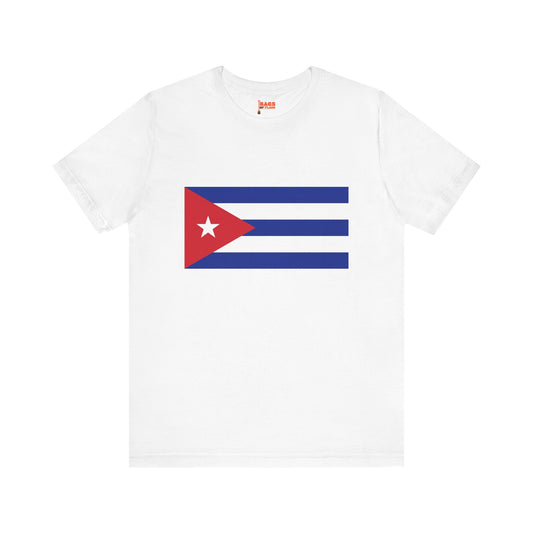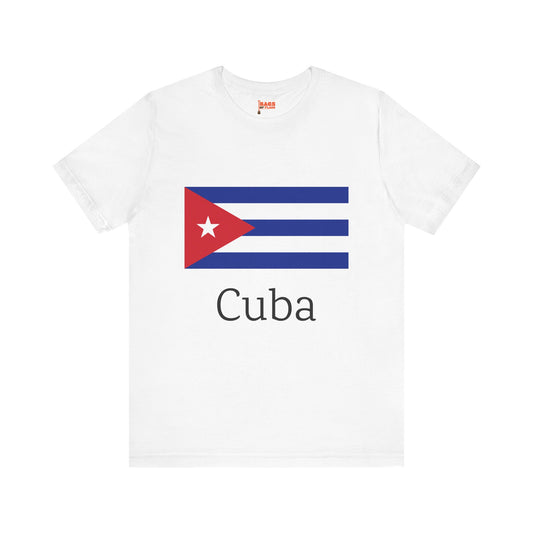-
Cuba Leather Patch Hat
Regular price $18.85 USDRegular priceUnit price / per -
Cuba Pillow
Regular price $22.65 USDRegular priceUnit price / per -
Cuba Backpack
Regular price $59.79 USDRegular priceUnit price / per -
Cuba Flag Sweatshirt
Regular price $34.15 USDRegular priceUnit price / per -
Cuba Sweatshirt
Regular price $34.15 USDRegular priceUnit price / per -
Cuba Trucker Cap
Regular price $14.90 USDRegular priceUnit price / per -
Cuba Flag on T-shirt
Regular price $22.79 USDRegular priceUnit price / per -
Cuba Hoodies
Regular price $34.40 USDRegular priceUnit price / per -
Cuba T-shirts
Regular price $22.79 USDRegular priceUnit price / per -
Cuba Flag Hoodies
Regular price $34.40 USDRegular priceUnit price / per
Collection: Cuba
The Cuba flag, also known as the flag of Cuba, is a symbol of national pride and unity for the Cuban people. This iconic flag holds deep historical significance and is rich in symbolism. We will explore the design, colors, historical context, symbolism, current relevance, and additional facts and protocols related to the Cuba flag.
Overview of the Cuba Flag's Design and Colors

The Cuba flag commands attention with its striking design, sporting a bold arrangement of five horizontal stripes alternating between blue and white. Anchoring the flag on the hoist side is a vibrant red equilateral triangle with a solitary white five-pointed star at its center. The blue stripes symbolize the island's three original provinces, each a cornerstone of Cuba's historical division.
Meanwhile, the white stripes convey a message of purity and the unyielding patriotism that defines the spirit of the Cuban people. The introduction of the red triangle adds a layer of profound symbolism, representing the blood spilled in the pursuit of freedom and independence. At the heart of this triangle, the white star shines as a beacon of liberty, guiding the nation's path forward. Together, these elements craft a visual narrative that encapsulates Cuba's rich history and aspirations, making the flag a significant emblem for Cubans at home and abroad.
Historical Context Surrounding the Cuba Flag

The origins of the Cuba flag trace back to 1849, well before its official adoption in 1902, amidst Cuba's earnest quest for independence from Spanish rule. Designed by Narciso López, a figure pivotal in the early independence movement, the flag was first conceived in New York City, a testament to the global dimensions of Cuba's struggle for sovereignty. López's vision for a free Cuba was symbolically embedded in the colors and layout of the flag, which he hoped would serve as a rallying emblem for the nation's fight against colonial oppression.
The flag debuted on a battlefield in 1850 during López’s failed expedition to liberate Cuba, embodying the aspirations and resilience of the Cuban people. Over the subsequent years leading to Cuba's independence, the flag became an increasingly potent symbol of unity and resistance against Spanish dominance. Its adoption as the national flag in 1902, following the end of the Cuban War of Independence and the establishment of the Republic of Cuba, marked the culmination of a tumultuous journey towards national sovereignty, forever enshrining the flag as a cornerstone of Cuban identity.
Symbolism Behind the Cuba Flag
Each element of the Cuba flag is imbued with deep symbolic meaning, reflecting the nation's values and history. The three blue stripes on the flag are indicative of the divisions of Cuba into its three original provinces, serving as a representation of the island's unity despite geographical separations. These stripes, set against the backdrop of pure white, emphasize the enduring spirit and purity of the Cuban people's aspirations for freedom.
Including a red triangle is a decisive nod to the sacrifices made during the struggle for independence, symbolizing the blood that was shed for the cause of freedom. Central to this triangle, and indeed the flag itself, is a lone white star, "La Estrella Solitaria" (The Lone Star). This star is a beacon of independence and sovereignty, illuminating the path toward liberty and a reminder of the country's solitary struggle against colonial rule and its enduring quest for self-determination. Together, these symbols weave a narrative of resilience, unity, and the relentless pursuit of freedom that inspires the Cuban people.
Current Relevance of the Cuba Flag
Today, the flag of Cuba remains a potent symbol of sovereignty and unity, prominently featured in an array of national events and observances. It flies high during military parades and governmental proceedings and at the forefront of cultural celebrations, embodying the Cuban people's enduring spirit and collective identity. The flag plays a crucial role in educational settings, serving as a teaching tool for instilling national values and history in the younger generations. On the international stage, the Cuba flag represents the nation in diplomatic missions, sporting events, and global forums, showcasing Cuba's heritage and aspirations on the world scene.
The flag has recently transcended its national significance, symbolizing resistance and solidarity in social and political movements both within and outside Cuba. Advocates for various causes often adopt its imagery, from demands for social reform to calls for greater freedoms, highlighting its role as a beacon for activism. This multifaceted use underscores the flag's dynamic relevance in contemporary Cuban society, mirroring the ongoing dialogue around national identity, independence, and the quest for a better future.
However, this broad spectrum of significance also opens the flag up to controversies, as its representation and usage become points of debate among different factions and perspectives within the country. Despite these discussions, the Cuba flag continues to wave, a testament to the nation's complex past, present struggles and hopes for the future.
Additional Facts and Protocols Related to the Cuba Flag
In respecting the Cuba flag, established protocols ensure its dignity is maintained. Flag etiquette dictates that the Cuba flag must be positioned at a prominent height, asserting its precedence when displayed alongside other flags. During ceremonial events, such as the hoisting or lowering the flag, individuals are expected to display reverence by standing at attention and saluting, a gesture of respect and national pride. It is considered a severe breach of respect for the flag to be allowed to touch the ground or to be displayed in an inverted position, as these actions symbolize distress or disrespect.
Additionally, the flag's design and colors are safeguarded under Cuban law, restricting any unauthorized modifications or uses of its likeness. These guidelines serve not only to preserve the physical integrity of the flag but also to honor the deep historical and symbolic significances it embodies for the Cuban people.


